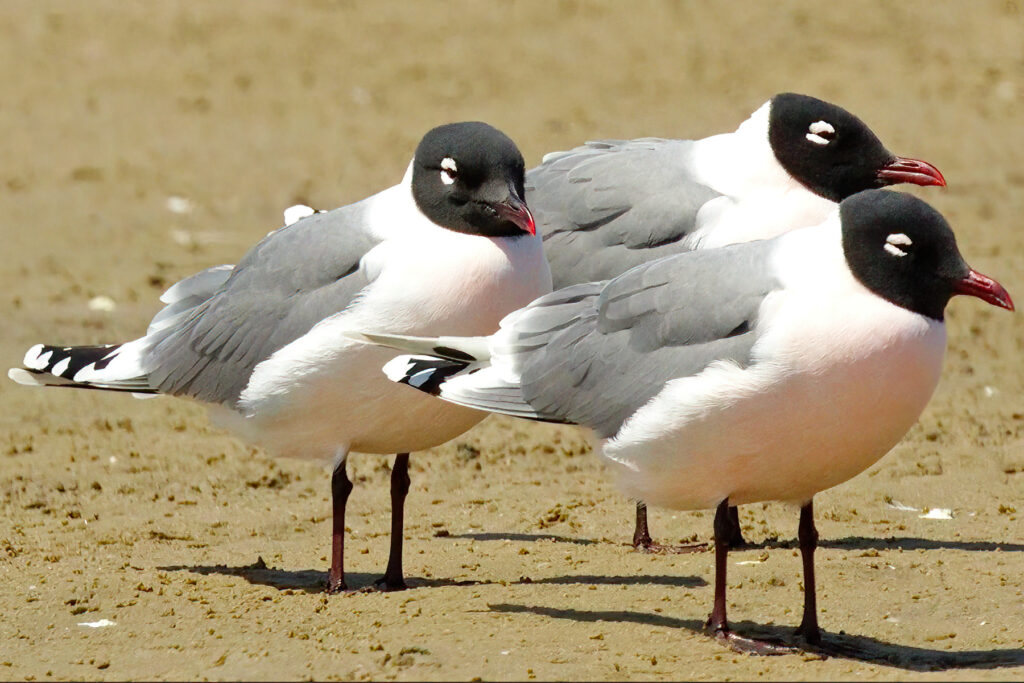
The Franklin’s Gull is a medium-sized gull species with a body length of approximately 12-14 inches and a wingspan of 30-34 inches. It weighs around 7-9 ounces, making it one of the smallest gulls in North America. Adult Franklin’s Gulls have a white head, neck, and underparts, with a dark gray mantle and black wingtips. During the breeding season, they develop a distinctive black hood that extends from their nape to their upper breast. The bill is slender and black, and the legs are bright red.
Franklin’s Gulls breed in the prairies of western North America, primarily in the Canadian provinces of Alberta, Saskatchewan, and Manitoba. They build their nests on the ground, often near water, and lay two to four eggs. After the breeding season, they undertake a long migration to their wintering grounds, which are primarily located in South America. They travel through Central America and along the Pacific coast of South America, covering a distance of approximately 7,000 miles each way.
During migration, Franklin’s Gulls can often be found in large flocks, especially around bodies of water. They are opportunistic feeders and will eat a wide variety of food, including insects, small fish, and carrion. They are also known to follow plows and tractors in agricultural fields to feed on insects and earthworms.
One of the distinguishing features of Franklin’s Gulls is their unique flight pattern. They have a distinctive buoyant and graceful flight, with deep wingbeats that alternate with periods of gliding. In flight, they can be identified by their dark gray mantle, white underparts, and black wingtips.
Overall, the Franklin’s Gull is a fascinating species with a unique life history and stunning field marks. Its small size and distinctive flight pattern make it a delight to observe, and its long-distance migrations make it an impressive feat of avian endurance.
